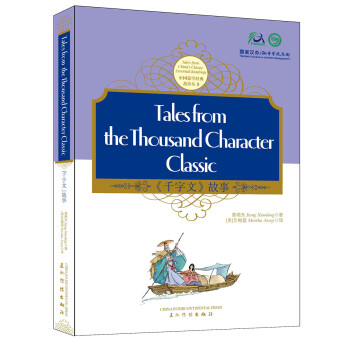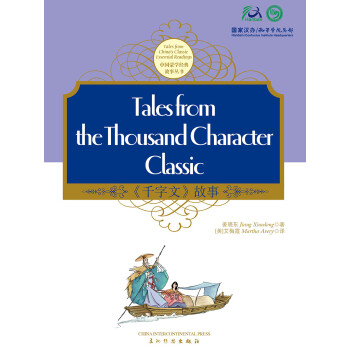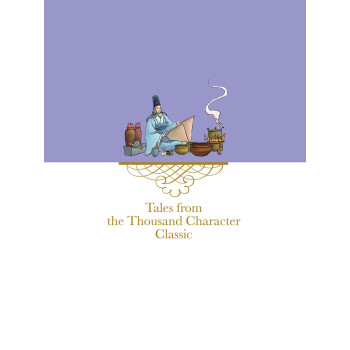- 规格参数
- 产品介绍
- 商品评价
- 包装清单
- 售后服务
- 常见问题
嫘祖养蚕制衣
原文:
乃服衣裳
故事:
相传黄帝时代的人们还发明了养蚕、编织丝绸、缝制衣服的方法,而这些工作,是在黄帝的妻子嫘(l9i)祖的带领下完成的。
在黄帝庆祝战胜蚩(ch~)尤的盛大聚会上,来了许多嘉宾,其中一位是少女变成的女蚕神,她向黄帝献上了一束洁白光亮的细丝。当时人们已经懂得加工动物的皮毛、树皮里的纤维等来制作衣服,但蚕丝这么美丽的材料,人们还是第一次见到。聪明能干的嫘祖拿到这蚕丝之后,很快以她灵巧的双手织成一块又轻又软的绢,用它给黄帝做了漂亮的礼服和礼帽。
当时,嫘祖带领一些人,负责为部落里的人们制作衣服,有人负责做帽子,有人负责做衣服,有人负责做鞋子。为了获得做衣服的材料,嫘祖带着人每天辛苦地剥树皮、纺麻网、加工动物皮毛。
见到蚕丝之后,嫘祖觉得这是很好的衣料,可是女蚕神所吐的丝是有限的,怎样才能源源不断地获得蚕丝呢?她向蚕神详细了解蚕的习性和蚕丝的来历,知道蚕喜欢吃一种叫桑树的叶子,于是决定找到这种树,以便人工养蚕。
嫘祖带领部落里的女性到处寻找,一种树一种树地辨别。工夫不负有心人,她们终于发现一片桑树林,远看去,树上好像结满了雪白的果实。嫘祖观察发现,那雪白的果实其实是蠕动的蚕虫口中吐出的细丝绕织而成的圆壳,叫作“茧”。她把茧带回去,把它们放在水里煮,然后把木棍伸进去搅拌,结果抽出了一根根像头发那样细的白丝线。
在嫘祖的建议下,黄帝下令让人民大量种植桑树,为蚕提供了源源不断的叶子。而嫘祖自己则开始亲自养蚕。经过很多次尝试,她终于掌握了养蚕、获得蚕茧、将蚕茧加工成丝线的一整套方法。这些经她之手生产出的丝线,与女蚕神所献的丝一样美丽光洁。嫘祖非常高兴,带领妇女们整天忙着抽丝、织出丝绸,然后为大家裁制漂亮的衣服。从此,养蚕、织布成为中国女性最主要的工作,而男性则负责狩猎和耕种粮食。
有了合适的衣料,嫘祖又开始研究如何更好地利用它们。她认为,应该将上衣和下身穿的衣服区分开来;另外,身份地位不同的人,应该穿不同的衣服,这样就可以很容易地将他们区分开来。
此后,嫘祖为推广蚕桑事业,教更多的人学会养蚕、治丝、织绢,到处奔走忙碌,最终病逝在路上。作为最早的养蚕人,她受到后世人们的尊敬,成为养蚕行业崇拜的女神。在古代,每年春天,中国皇帝都要模仿神农举行耕种仪式,而皇后则模仿嫘祖举行养蚕仪式。
由于嫘祖等人的发明创造,古代中国被称为丝绸之国。有了丝绸,才有了后来闻名世界、影响深远的“丝绸之路”。
Lei Zu Raises Silkworms and Weaves Cloth
Legend has it that other inventions were made by humans during the era of Huang Di, such as how to weave silk into fabrics and sew the fabric into clothing. People say that these things were accomplished under the leadership of Huang Di’s wife, Lei Zu, or Ancestress Lei.
When Huang Di held a victory celebration commemorating his triumph over Chi You, among the many guests was a young woman who was actually the goddess of silk, transformed into a human for the occasion. She made an offering to Huang Di of lustrous pure-white silk threads. At time, people already knew how to process animal skins into hides, and how to make useful fibers out of tree bark, but this beautiful material called silk was something new. The moment Lei Zu got hold of it, she began to weave it with her nimble hands into a piece of soft and light juen, which is a particular kind of silk fabric. She then used it to make a handsome set of ceremonial robes and a ceremonial hat for Huang Di.
At the time, Lei Zu was in charge of a group of people in the tribe who were charged with making clothes for people. Some were responsible for hats, some for clothes, some for shoes. They spent tremendous amounts of time processing the materials for these things, scraping bark off trees, weaving hemp into nets, processing animal hides. All of this was hard work.
After seeing the silk of the silkworms, Lei Zu realized that this would be a marvelous material for clothing. The silk that the goddess of silk had ‘spit out’ at the celebration was limited, however, so the question became how to find a continuous source of the raw silk. After asking the goddess in detail about how silkworms operate and where the silk comes from, she found out that silkworms must eat a particular kind of leaf that grows on the mulberry tree. She determined that she would find this tree so that people could raise their own silkworms.
She led the women in the tribe throughout the land, searching among all the trees, differentiating one from another and trying to locate mulberry trees. Work does not deter anyone who is determined, and in the end Lei Zu found a mulberry forest. Seen from afar, it appeared to be covered with white fruit. Looking at the fruit more closely, Lei Zu saw that this was in fact little white cases of silk. Each round encasement was being spit out by a wriggling silkworm that was hidden inside, and the encasements came to be called cocoons. Lei Zu took these cocoons home and boiled them in water, then used a stick to stir them so that the filaments adhered to the stick. Drawing these out, she found that she had fine white silken threads, like very soft hair.
At Lei Zu’s recommendation, Huang Di sent forth an edict that required people to plant a large number of mulberry trees, in order to provide an unending source of food for the silkworms. Lei Zu herself began to raise silkworms. After much experimentation, she finally learned how to do it properly and was able to raise silk as lustrous and beautiful as that offered to the emperor by the goddess of silk. Happy as she could be, Lei Zu now spent her days drawing silk from cocoons, then weaving silk with the other women, then sewing it into beautiful clothing. From this point on, raising and weaving silk became the primary occupation of women in China, while men were responsible for hunting and tilling the fields for grain.
Now that she had suitable material, Lei Zu began to research how better to use it. She felt that it would be good to distinguish clothing worn on the upper part of the body from that worn on the lower part, and also to use clothing to differentiate among different kinds of people. In this way, it would be easier to see at a glance who was who, by seeing what they wore.
After this, Lei Zu began to travel widely in promoting the silk industry, teaching more people how to raise silkworms, process the silk, and weave fabric, until and in the end she became ill and died along the way. As the first one to raise silkworms, she is revered by later generations and has herself become a venerated goddess in the silk industry. In olden times, every spring the emperor would perform a ceremony that ritually enacted the planting of grain by the god of agriculture,Shen Nong. The empress in turn ritually enacted the raising of silkworms as first done by Lei Zu.
Due to the inventions of people like Lei Zu, in ancient times, China was described as the country of silk. Given its silk, in later times it came to be at the end of the famous trade route known as the “Silk Road.”
《千字文》是南北朝时梁朝人编写的,4个字一句,共250句,1000个字,所以成为“千字文”。本书根据《千字文》,精选了一些广泛流传的故事,以简短而生动有趣的方式讲述出来。
The Thousand Character Classic was compiled by a man of the Liang Dynasty. With four characters in each sentence, there are 250 sentences and 1000 characters in the book. Due to this reason, the book is titled the Thousand Character Classic.
Contents
目录
传说故事
Legendary Tales
历史故事
Historical Tales
美德故事
Tales of virtue
人才故事
Tales of Talents
《千字文》
注:本站商品信息均来自于厂商,其真实性、准确性和合法性由信息拥有者(厂商)负责。本站不提供任何保证,并不承担任何法律责任。
由本网站发货的订单,在订单发货之前可以修改,打开“订单详情”页面,若已经出现物流信息,则表示订单无法修改。
您可以通过以下方法获取商品的到货时间:若商品页面中,显示“无货”时:商品具体的到货时间是无法确定的,您可以通过商品页面的“到货通知”功能获得商品到货提醒。
如订单处于暂停状态,进入“我的订单"页面,找到要取消的订单,点击“取消订单”按钮,若已经有物流信息,则不能取消订单。
本网站所售商品都是正品行货,均开具正规发票(图书商品用户自由选择是否开发票),发票金额含配送费金额,另有说明的除外。
在商品页面右则,您可以看到卖家信息,点击“联系客服”按钮,咨询卖家的在线客服人员,您也可以直接致电。
同个订单购买多个商品可能会分为一个以上包裹发出,可能不会同时送达,建议您耐心等待1-2天,如未收到,本网站自营商品可直接联系标准查询网在线客服。
登陆网站,进入“我的订单”,点击客户服务下的返修/退换货或商品右则的申请返修/退换货,出现返修及退换货首页,点击“申请”即可操作退换货及返修,提交成功后请耐心等待,由专业的售后工作人员受理您的申请。
一般情况下,退货处理周期(不包含检测时间):自接收到问题商品之日起 7 日之内为您处理完成,各支付方式退款时间请点击查阅退款多久可以到账; 换货处理周期:自接收到问题商品之日起 15 日之内为您处理完成。
首页 | 关于我们 | 联系我们| 友情链接| 手机商城| 企业文化| 帮助中心|
© 2016-2024 标准查询网 版权所有,并保留所有权利。联系地址: 海淀区后屯南路26号专家国际公馆5-20室 Tel: 010-62993931 E-mail: 2591325828@qq.com
ICP备案证书号 : 京ICP备09034504号






好评度